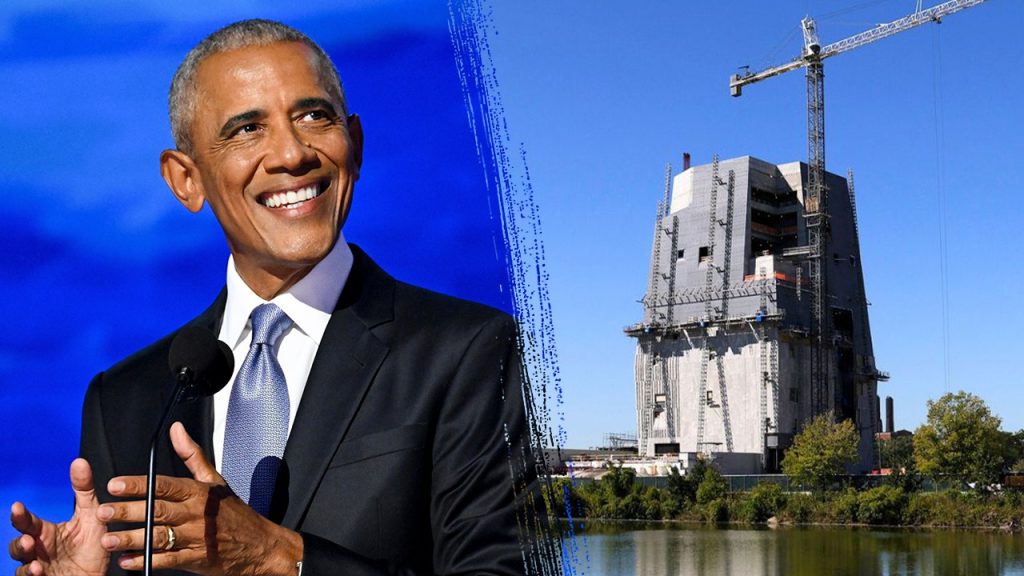This legal dispute centers around allegations of racial discrimination in the construction of the Obama Presidential Center in Chicago. Robert McGee, owner of II in One, a subcontractor responsible for concrete and rebar work, has filed a $40 million lawsuit against Thornton Tomasetti, the structural engineering firm overseeing the project. McGee alleges that Thornton Tomasetti implemented discriminatory practices that led to excessive work, cost overruns, and threatened his company’s solvency.
At the heart of the lawsuit are claims that Thornton Tomasetti deviated from established industry standards by imposing stricter rebar spacing and tolerance requirements than those outlined by the American Concrete Institute. This resulted in what McGee describes as overly stringent inspections and a mountain of paperwork, severely impacting productivity and causing substantial financial losses. The lawsuit alleges that these actions were specifically targeted at II in One and its joint venture partner, Concrete Collective, and were motivated by racial bias. McGee accuses Thornton Tomasetti of falsely questioning II in One’s qualifications while simultaneously deeming non-minority-owned contractors as sufficiently qualified. The lawsuit portrays II in One as a victim of discriminatory practices, facing financial ruin due to Thornton Tomasetti’s alleged actions.
Thornton Tomasetti vehemently denies these accusations. In a memo predating the lawsuit, the firm attributed the project’s cost overruns and delays to the alleged underperformance and inexperience of II in One. They provided photographic evidence of cracked concrete slabs and exposed rebar, claiming that these issues stemmed solely from the subcontractor’s inadequate work. Thornton Tomasetti asserts that they invested significant time and resources in reviewing, analyzing, and redesigning elements to address the alleged deficiencies caused by II in One. The memo characterizes the subcontractor team as “questionably qualified,” suggesting that more competent contractors would not have required the extensive assistance provided by Thornton Tomasetti and the architectural firm.
The lawsuit paints a stark contrast between the two parties’ perspectives. II in One claims to be a victim of racially motivated sabotage, forced to shoulder the financial burden of unnecessary work and facing potential bankruptcy. Thornton Tomasetti, on the other hand, portrays II in One as an unqualified subcontractor responsible for the project’s delays and cost overruns, arguing that they acted professionally and went above and beyond to rectify the situation. This conflicting narrative sets the stage for a complex legal battle, with each side presenting contrasting evidence and interpretations of the events.
This dispute is not the first controversy surrounding the Obama Presidential Center. The project, initially slated to begin in 2018, faced delays and eventually commenced in 2021, with a projected opening in 2026. Community activists have expressed concerns about potential displacement due to rising housing costs, while environmental groups have raised objections over the project’s impact on trees and bird habitats. Despite these challenges, the project proceeded after legal challenges were dismissed, including a Supreme Court denial to hear the case. Former President Obama has emphasized the center’s potential to benefit Chicago’s South Side and foster community unity.
The lawsuit raises complex issues of racial discrimination in the construction industry. If proven, the allegations against Thornton Tomasetti could have significant implications for the firm and the broader industry. The case will likely delve into the specifics of the project, examining the validity of Thornton Tomasetti’s claims regarding II in One’s performance and the justification for the stricter standards imposed. The courts will need to determine whether these actions were indeed discriminatory or based on legitimate concerns about the quality of work.
The Obama Presidential Center, intended as a symbol of hope and progress, now finds itself embroiled in a legal battle that could tarnish its legacy. The outcome of the lawsuit will not only determine the financial fate of II in One but also shape the narrative surrounding the center’s construction. This case highlights the persistent challenges of ensuring equitable practices in the construction industry and underscores the importance of addressing allegations of discrimination promptly and thoroughly. The court’s decision will have far-reaching consequences, potentially setting a precedent for future cases involving similar allegations.

